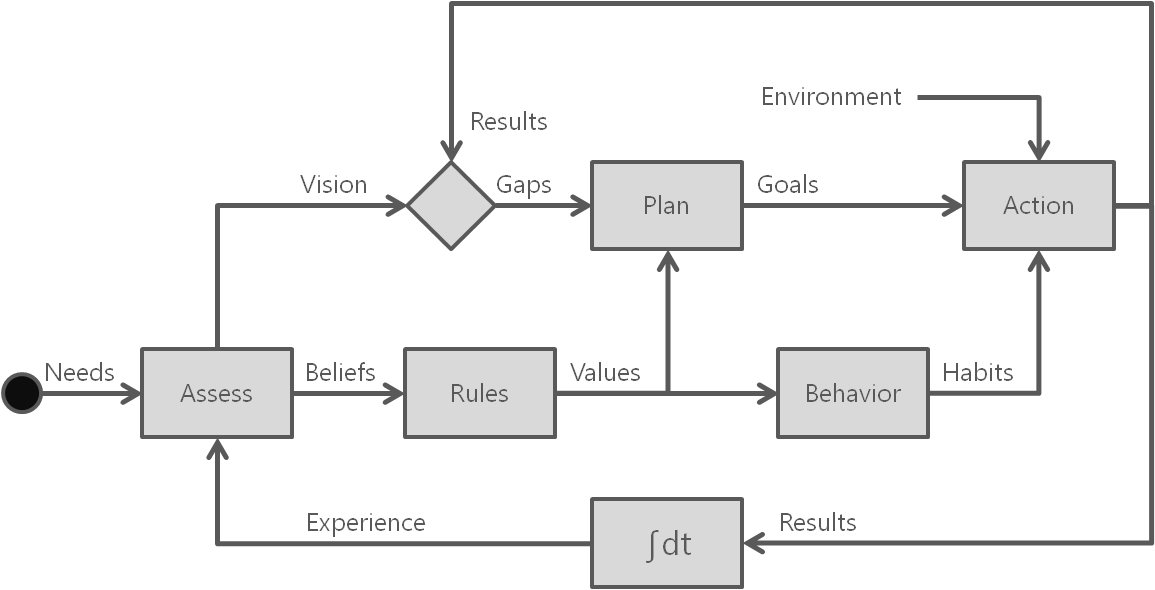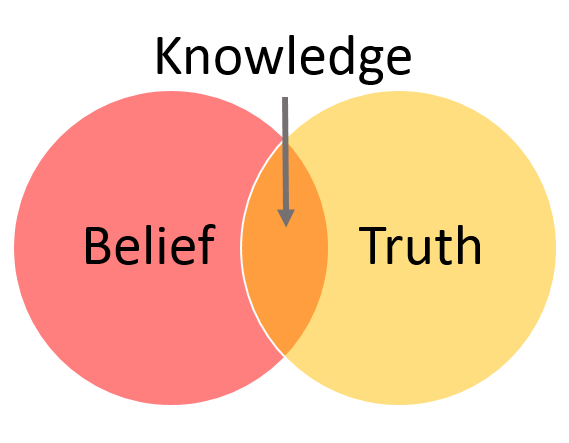Blog

Built to Last Analogy
In Built to Last, Collins and Porras seek to describe the habits of successful companies. They propose that successful companies are not afraid to continually transform themselves into something better- but they remain true to their core values. This idea can be applied to individuals as well. The figure representing this idea uses the Yin (stable) Yang (changing) symbol. It is also a reminder of the concept of impermanence- all things eventually change. This is a good fit with the...
Read More
Ineffective Actions – Current Reality Tree
Using the Feedback Loop Model for Actions, you can apply Goldratt’s “Thinking Process” (which is explained best in Dettmer’s book) to help understand why undesired results are occurring. Setting a correct Vision is a large topic by itself and for this discussion the focus is on the impact of beliefs on action. So let’s assume a vision has been selected that is truly aligned to needs and doesn’t violate physical laws! If this the case, then the root cause of ineffective...
Read More
Assessment
The most critical part of the feedback loop model for action is Assessment: evaluating how your needs are being met based on your experience and using that judgement to form your vision and beliefs. Vision is imagining the ideal life that fulfills what you want. A vision serves as a target to move towards [1], increasing the chances that you’ll achieve what you want by helping keep a focus – rather than just drifting through life. As the feedback model...
Read More
Gandhi on Beliefs
Your beliefs become your thoughts, Your thoughts become your words, Your words become your actions, Your actions become your habits, Your habits become your values, Your values become your destiny. –Mahatma Gandhi
Read More
Feedback Loop Model for Action
Hyram Smith’s book 10 Natural Laws of Successful Time and Life Management has an excellent section on productivity and beliefs. He views beliefs as a window through which we see the world. This view can be reasonable or distorted, depending on the belief system. Expanding on his concept, consider the following feedback loop diagram: Working from Needs on the left-hand side, we make assessments of how well our needs are being met based on our experiences. This leads to a...
Read MoreFear
Like needs, fear is a motivator that drives many of our actions but in an opposite manner. We pursue needs and flee from fears. Many authors have created lists of fears, just as psychologists have documented many phobias. For the purposes of investigating beliefs, perhaps fear can be viewed as bringing uncertainty thus strengthening the need for certainty. A simple, but useful, list of fears is: Success. Despite pursuing success, we often fear the consequences of achieving it: it will...
Read More
Needs
There are several models available for describing our basic needs; a good compilation can be found here. These models range from lists of 3 to many, any needs. I have found Tony Robbin’s model interesting since it captures opposing needs- something that seems fundamental in setting up the dynamics of trying to balance our needs overall. The diagram below shows the three pairs of opposing needs as being located on opposite sides of a wheel: Needs can be considered...
Read More
Beliefs
What is a Belief? A belief is an explanation for why things seem to happen that we accept as true. Just because we believe something to be true, doesn’t it make it so. One definition of knowledge is when truth and belief overlap: A belief is different from a judgement, which involves consciously evaluating a proposition for its truth. If the conclusion is that it is true, judgement may lead to forming a belief. The belief acts as a...
Read MoreHello world!
Beliefs drive most of our actions, sometimes to our benefit. However, incorrect beliefs can lead to actions that may hold us back from achieving what we want or need. This blog is an exploration of how we form beliefs, recognize when they limit us, and how we can change them. I’m a technologist that values self-improvement and philosophy and make no claims to being an expert on behavior and psychology. My interests in personal productivity have lead to investigating the...
Read More